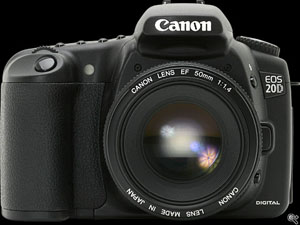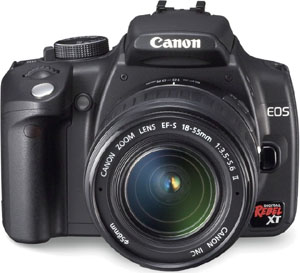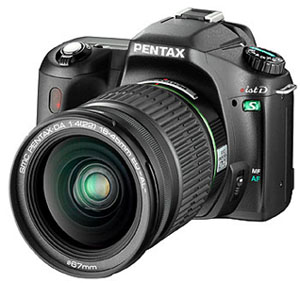Monday, April 25, 2005
TIM GREY AND DIGITAL IMAGINGIf you haven't become acquainted with Tim Grey already, let me introduce you. Tim used to be George Lepp's digital guru. He taught classes at Lepp's Institute of Digital Imaging and launched the DDQ email service (more about that in a moment). His articles have appeared in Outdoor Photographer, PC Photo and other magazines. Tim really knows his stuff. He was snatched up by Microsoft a few months ago. Tim is providing a wealth of information that you can get online for free. If digital photography is your thing, you should sign up for Tim's Digital Darkroom Questions E-mail Service (DDQ for short). You can receive the DDQ mailings for free. To ask questions, you need to be a subscriber. Even if you don't want to ask questions, I would suggest you make a donation to support all of the information he is providing. One example of a DDQ question and answer is at the end of this post. Tim has written a white paper on optimising a Windows XP system for digital imaging. It is a detailed and comprehensive article (41 pages) that will help you set up your Windows XP system to make the most of digital imaging. You can make the most of the system you now have. If you are going to buy a new computer with Windows XP, read this white paper first. You can download the pdf file here. Tim has also authored or co-authored several helpful books: Photo Finish: The Digital Photographer's Guide to Printing, Showing, and Selling Images by Jon Canfield and Tim Grey Color Confidence: The Digital Photographer's Guide to Color Managementby Tim Grey Real World Digital Photography, 2nd Edition by Katrin Eismann, Sean Duggan, and Tim Grey Learn to Make Great Digital Photos For 5 Bucks! by Tim Grey If you decide to buy one of these books, you can help support this blog by going to JimDoty.com and using the Amazon link at the bottom of the page. Thanks. *** *** *** A Q&A from a recent DDQ follows. QUESTIONI will be getting a new scanner, using it to scan mostly slides (velvia, provia and sensia) but some negatives (mostly B and W) - all 35mm. Scans will be low res for my own website, for sample submissions and to supply to one stock agency, and high res for another stock agency (Alamy) and to supply direct to clients for publication. I may use scanning later to produce scans for inkjet printing, but this would be very much a secondary use . My questions are as follows: * Scanner * - Which scanner would you recommend. I am currently considering the Minolta DiMAGE Scan Elite 5400 II or the Nikon Coolscan V ED. If I was to get the Coolscasn 5000ED it would have to be second-hand (definitely not my preferred option) does it really offer advantages worth twice the price? I will be using Pshop 7 and a Dell e772p monitor. Ram - I am planning to upgrade to 1GB. Will this be enough? * Profiles - What is the best way for me to deal with scanner profiling? * Monitor calibration - Are you still recommending the Spyder 2 as the best of the cheaper alternatives? This will be my first attempt at monitor calibration. * Books - I have your great book Color Confidence, are there any others you would recommend that would help with learning to produce high quality scans. * Software - Would you recommend getting the Vue Scan software or just using the Nikon programme. The Silverfast software looks excellent, but is out of my price range unless it offers very significant advantages. ANSWER"The Minolta and Nikon scanners are both very good, but I do prefer the Nikon scanners because they've demonstrated better performance with Digital ICE in my testing. Otherwise I consider them to be essentially equal, but the Digital ICE performance is a significant benefit of the Nikon scanners. As for choosing between the Coolscan V ED and the Coolscan 5000 ED, I'd be perfectly comfortable going with the V ED. Frankly, Nikon did so much to improve the V ED that there isn't much difference in upgrading to the 5000 ED. Having 1GB of RAM will be adequate provided you're only scanning one image at a time and saving it, and that you're not working on more than one image at a time in Photoshop. If you'll be working with multiple images at a time I'd consider going to 2GB, but even then 1GB will work well, it just won't necessarily give you optimal performance depending on how much you stress the system. With the Nikon scanners I really consider profiles totally optional. They will improve the workflow from the standpoint that less color correction would then be necessary, but the Nikon scanners render very accurate color to begin with. If you do want to profile your scanner, I'd recommend using the MonacoEZcolor (www.monacosyst.com) as a simple solution that produces very good results. I do recommend the Color Vision Spyder2 package (www.colorvision.com) as the most affordable and easiest to use monitor calibration package. I consider the X-Rite and GretagMacbeth offerings to be a little more accurate, but I'm perfectly comfortable with what Color Vision offers. Unfortunately, I don't know of any recent books on the subject of scanning that I can recommend. Taz Tally had an excellent book on scanning about five years ago, so that one is going to be a bit out of date. He's written a more recent book on Silverfast, but that won't necessarily apply to you. Both are excellent, but neither probably meet your needs. I've only heard of one other book recently on scanning, but I've not seen it so I couldn't comment on the quality of it. I would personally stick with the Nikon software. I know many DDQ readers use and love VueScan, and many others love Silverfast. Both are excellent programs and offer a number of advantages. However, I've always been impressed with what is possible right out of the box with the Nikon scanners. My recommendation would be to start off using the Nikon software and see how you like it. If you're at all disappointed (and I don't think you will be) then take a look at VueScan. They do offer a free trial download of VueScan (http://www.hamrick.com/vsm.html), so I'd encourage you to try it out, but I think you'll be perfectly happy using the Nikon Scan software included with the scanner." DDQ Answer: Copyright by Tim Grey. All Rights Reserved.
Thursday, April 21, 2005
GRAY MARKET PHOTO EQUIPMENTWhat is "gray market" (parallel import) photo equipment? It costs less but is it worth it? Is it the same as "U.S. warranty" equipment? What are the risks in buying gray market gear? Does the gray market dealer matter? Learn more here.
CANON 20D CAMERA SETTINGS Digital cameras have so many menus and options and custom functions, how do you set them up to take pictures? I wrote three articles on how I set up the Canon 20D camera. Although they are about the 20D, many of the settings are applicable to other models and brands of cameras. Menu SettingsCustom FunctionsTop Deck Controls
Wednesday, April 20, 2005
NEW NIKON CAMERASFirst there were the rumors, then the brief and "accidental" announcement on a website, then the official Nikon pre-announcement. Today it is official as Nikon announces the D50 and D70s. The D50 is a simpler and less expensive version of the highly respected D70. The D70s is a replacement for the D70. DP Review has posted a hands on preview of the D50 which is well worth reading if you have a bunch of Nikon lenses and you are thinking about making the switch to digital, or if you want a less expensive backup for your D70. I will keep you posted when full reviews are available.
Tuesday, April 19, 2005
CARRY YOUR CAMERA WITH YOU! I was going on a short trip to the store at lunch time. Why take a camera? (I almost always have a camera with me.) I pulled into the parking lot of the store in time to see the store manager confronting a shoplifter in the parking lot. The shoplifter was sitting in his car and the store manager wouldn't let him close the door. The shoplifter pulled out a knife and lunged at the store manager. Me with no camera. The shoplifter missed with the knife, thank God. As the store manger jumped back, the shoplifter shut the car door and drove off. The manager ran for the store as a police car pulled into the parking lot. I gave the officer a description of the car and the direction the shoplifter went. The officer radioed in and took off. I got back in my car and followed (at a more normal speed). A few blocks down the road there was a multi-car police road block in front of the local high school. The suspect's car was up on the high school lawn, doors open. The suspect was spread-eagled on the lawn and being cuffed by police. Hundreds of kids were standing around (on their lunch break). Me with no camera! The terrible irony is that I did free lance work for the local newspaper at the time. ME WITH NO CAMERA!! So if I don't have my SLR with me, I do carry a point and shoot. Incidentally, the shoplifter had stolen a carton of cigarettes. Let's see, assault with a deadly weapon, speeding, resisting arrest, public endangerment . . . Happy Shooting! (and carry your camera with you)
Friday, April 15, 2005
CANON REBATES April 15-July 15, 2005Today Canon announced rebates on two digital cameras, a bunch of lenses and some binoculars. If you are planning on buying one of these items, you have from now until July 15. More details are here and a list of rebate items follows. Here is the list: "CASH IN WITH CANON" REBATES April 15, 2005 – July 15, 2005 CAMERA BODIES EOS 1D Mk II - $500 EOS 20D - $100 ZOOM LENSES EF 16-35/2.8 L - $50 EF 17-40/4 L - $25 EF 70/2.8 L - $45 EF 28-135/3.5-5.6 IS - $15 EF 28-200/3.5-5.6 - $15 EF 70-200/2.8 L IS - $50 EF 70-200/2.8 L - $40 EF 70-200/4 L - $25 EF 70-300/4.5-5.6 DO IS - $40 EF 75-300/4-5.6 IS - $15 EF 100-400/4.5-5.6 L IS - $50 PRIME (SINGLE FOCAL LENGTH) LENSES EF 20/2.8 - $15 EF 28/1.8 - $15 EF 50/1.4 - $15 EF 85/1.8 - $15 EF 100/2.0 - $15 EF 135/2.0 L - $35 EF 200/2.8 L - $25 EF 300/4 L IS - $45 EF 400/5.6L - $40 SPECIALTY LENSES EF 15/2.8 fisheye - $25 EF 100/2.8 macro - $20 EF 180/3.5L macro - $50 FLASH UNITS Speedlite 580EX - $20 Speedlite 420EX - $15 Speedlite 220EX - $10 Macro Twin Lite MT-24EX - $50 Macro Ring Lite MR-14EX - $30
Tuesday, April 12, 2005
Recent Digital Camera ArticlesDue to the field of view crop of many current digital SLRs, the lenses we used on our film cameras behave different on our digital cameras. I have three new articles on my photo website that discuss this.
Field of View Crop In Digital SLRs
Depth Of Field For Digital SLRs
Hyperfocal Distance Chart For Digital SLRs
Friday, April 08, 2005
TWO NEW NIKON D-SLRsGood news for photographers with Nikon equipment. Today Nikon UK confirmed recent rumors of two new Nikon digital SLRs that will be introduced later this month. One will be a replacement for the Nikon D-70. The other will be a new and lower priced entry level camera. The Nikon D-70 is one of the best digital SLRs in the under $2,500 category. An even better version will be welcome. Having another camera even less expensive than the D70 is also good news. Rumored to be called the D-70s and D-50, both cameras are good news for anyone with Nikon lenses that is thinking about making the move to digital. The original press release is here.
The text of the press release follows: *** *** *** "Friday April 8, 2005 Nikon Product News Update Following recent speculation, Nikon UK is pleased to confirm the launch of two new digital SLR cameras to be launched towards the end of April 2005. Both cameras have been designed to meet the requirements of the entry-level digital SLR user. The first will position itself as successor to the Nikon D70, offering an upgraded version to this highly commended D-SLR. The camera will incorporate the latest in Nikon technology, whilst retaining the functionality and quality which has come to be expected from the D70. In addition to this, Nikon will be introducing a second D-SLR, specifically designed for consumers looking to upgrade from a digital compact to the next level of digital photography. The camera will be affordable and easy to use, perfect for the D-SLR beginner. More detailed information on both new products will follow shortly."
Wednesday, April 06, 2005
CANON DIGITAL REBEL XT (350D) Canon Digital Rebel XT (350D) Canon Digital Rebel XT (350D)DP Review has posted a full review of the Canon Digital Rebel XT, giving it a HIGHLY RECOMMENDED rating, their highest. You can read the review here.
Monday, April 04, 2005
Pentax *ist DS Digital SLR Pentax *ist DS Digital SLR Pentax *ist DS Digital SLRDP Review has posted a review of the Pentax *ist DS. The camera received a "RECOMMENDED" rating, the second highest that DP Review gives out. The camera is better than this rating would appear to indicate. The primary reason for not giving this camera a "HIGHLY RECOMMENDED" rating is that the quality of the jpeg files differs so much from the RAW files. RAW files are excellent so the in-camera image processor that creates the jpeg files from the RAW data is not doing the job as well as it should. If you shoot primarily in RAW mode, this shouldn't be a concern. If you shoot primarily in jpeg, this might be a concern. Read the whole review at DP Review to get the whole story. Several weeks ago I posted a write up on a very different kind of review on the *ist DS by Mike Johnstone. He really likes this camera. For the additional perspective, read Mike's review. If you have a bunch or Pentax lenses and you are thinking about going digital, this STILL might be the camera you want to get. Read both online reviews and think about it. You can also read the digital SLR comparison in the April 2005 issue of POPULAR PHOTOGRAPHY magazine. The *ist DS is on page 88.
|